Since starting ProfitWell, I've talked to hundreds of business owners who've tried to grow their businesses almost entirely by increasing their website traffic.
This is a big mistake.
A constant stream of blog posts, ebooks, and conference talks led these folks to believe that the only way to higher profit was traffic.
But traffic alone won't change your profit. My research shows that the best way to increase your ecommerce profit is to capitalize on that traffic — doing everything you can to make sure every visitor looks at your store and wants to buy from you.
And the key to making that happen is thinking carefully about how you price your products.
If your business isn't making the kind of money you want, you need to revisit your product pricing. In this post, I'll walk you through three ways of adjusting your pricing to increase your ecommerce profit:
%(tableofcontents)
1. Raising Your Prices
What would you say if I offered you a 60” LCD TV for $50?
You'd probably ask what was wrong with it.
Shoppers tend to be skeptical of anything that seems too good to be true. Price your products too low, and you'll have shoppers wondering if you cut corners or used subpar ingredients. Raise them, and you'll send the message that you have a quality product.
If products aren't selling, it's time to research the effect of a price increase. If you decide to go through with it, your goal should be to raise your prices just enough so shoppers think less “it's too good to be true” and more “it's probably like that for a reason.”
For example, Fracture, a company that prints photos directly on glass, published a blog post about their price increase. They raised prices between 8% and 13% to fund a new facility and additional printing technology.[*]
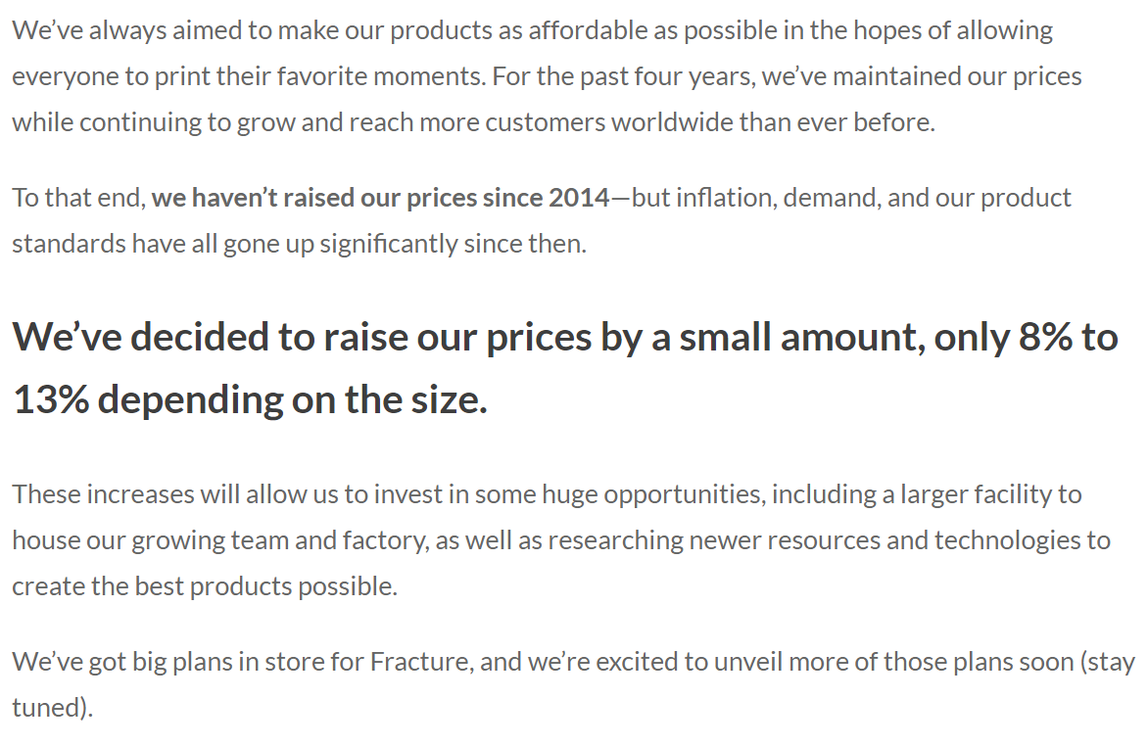
Post-increase, they’ve justified their higher prices with statements like the one below, noting their U.S.-based headquarters and dedication to sustainability:
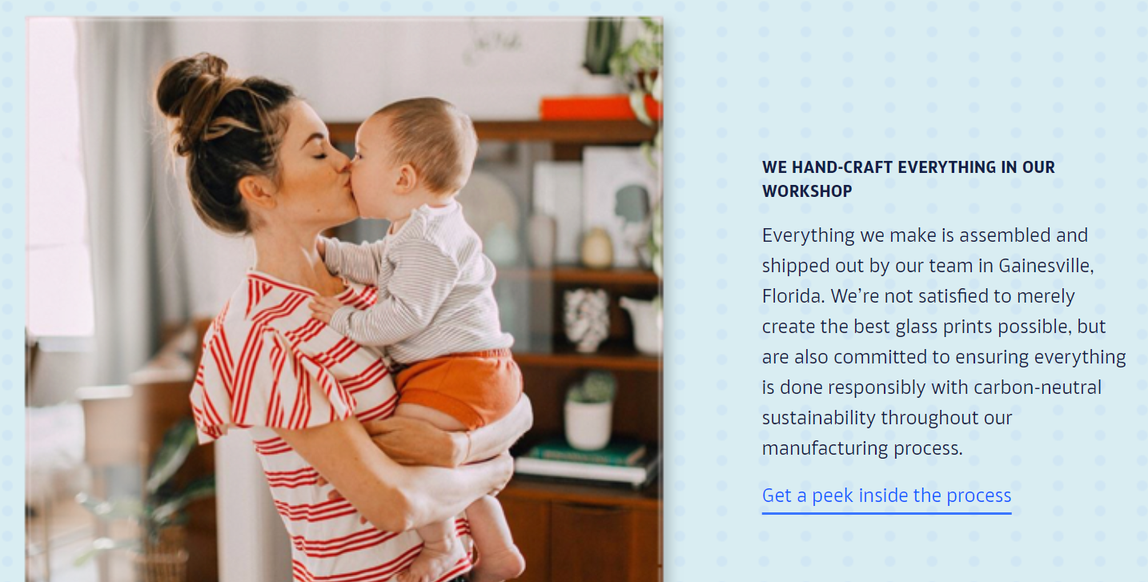
If you want to raise your prices, you'll need to plan carefully. Ask yourself these four questions first:
-
Which products would benefit most from an increase? Ecommerce expert Andrew Youderian recommends price increases for your most popular products, since they probably make up most of your revenue.[*]
-
How much do you want (or need) to raise prices? Use a product pricing calculator to make sure you're covering your margins. Raise the price immediately if you're not. Otherwise, look at what you'd get after increasing your markup by just a few percentage points.
-
What are your competitors doing? Do you want to sell above, at, or below their prices? If you're currently below, you could be sending the message that you're cheaper — in a bad way. Don't be afraid to aim higher if your product is legitimately better.
-
What will you say to your customers? Even if you have a small store, be prepared for someone to notice. Think about how you'll explain the increase to them. Does it help you cover your operating costs? Source better ingredients? Move manufacturing back to your country? Tell them why the increase is a good thing — they'll be more likely to support you.
2. Lowering Your Prices
Of course, it's all too easy for prices to go too high.
Remember how I offered to sell you a 60” TV earlier? Let's say the price is now $5,000.
Most of you are probably thinking “I do not need to spend five grand on a television.” A few of you might actually be interested, depending on the specs, but you're the outliers and you know it.
High prices can force products into a niche where there are fewer customers ready and willing to buy. And if your prices are too high, you're probably seeing the same thing happening: lots of interest in the form of high website traffic and time on page, but almost no follow-through in the form of conversions.
In this case, you need to try lowering your prices. You still need to cover your margins and make a profit, but you need to get yourself out of the niche you're currently stuck in.
A great example of this happened after Amazon purchased Whole Foods in mid-2017. After the deal was finalized, some Amazon Prime members got access to Whole Foods products at lower costs, both in stores and online.[*]
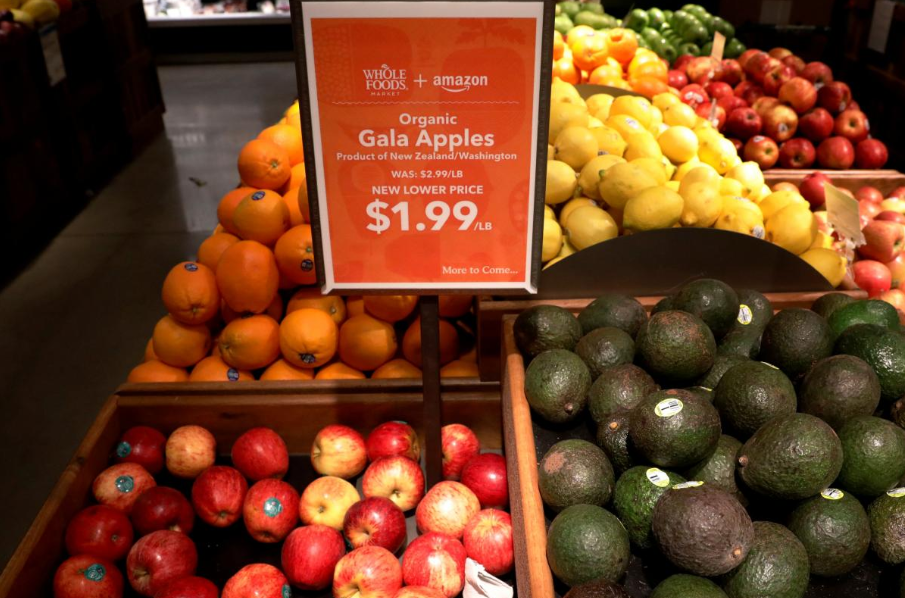
Before the acquisition, Whole Foods was seen as an organic foods market that only certain people could afford — they had the “Whole Paycheck” nickname for a reason. Amazon's price-cutting made some products more affordable for some markets:
The new perks could make Whole Foods cheaper than conventional grocers for about eight million of its customers who already subscribe to Amazon Prime, according to Morgan Stanley analyst Brian Nowak.[*]
If you think lowering your prices (or experimenting with discounting) will boost your sales, ask yourself these four questions before you do anything:
-
Which products are overpriced? Not everything needs to change. If 90% of your items are selling but you have just a few items that aren’t, focus on those.
-
How low can I really go? Again, a product pricing calculator will help you double-check that you're covering your costs and actually making money. If you are still able to cover your costs, start by cutting your markup by 5-10%.
-
Can I get rid of any slow-moving, low-margin items? If you're selling something expensive that no one's really interested in, and your profit margin is already slim, sell your remaining inventory at a discount to clear it out, then focus your time and energy on faster-moving, higher-margin products.
-
Can I recover my losses? Look for to make your money back (and then some) — eliminating free shipping, adding product bundles, or introducing new (higher-margin) items.
3. Implementing Value-Based Pricing
What's tricky about trying to increase your ecommerce profit by raising or lowering prices is that there’s still uncertainty about how much you should change.
Raise your prices too much, and you might shut out loyal customers or lock yourself into a niche. Lower them, and you could make your products look cheap. Even using discounts might attract the wrong kind of customer: one who's probably not going to come back again.
I have my own way of increasing profit for an online business. It's called value-based pricing, and I recommend it to everyone.
A value-based pricing strategy is all about setting your prices exactly where your ideal customers are willing to pay. It uses research and real customer data to set the value for your products, and that value is the price you charge.
With value-based pricing, the majority of your customers are happy, because they're paying an ideal price for your items. And you're happy, because all your decisions are based on customer data, not blind guesswork.
This might all sound abstract, so here’s an example of value-based pricing in action.
Prose, a hair care company created in 2017, sells custom shampoo and conditioner online for $25 to $32 per bottle, depending on the formula. Customers have an online or in-person consultation to find out what their hair needs are (moisture, curl definition, etc.), and the company manufacturers a custom blend for them in their facilities in France:
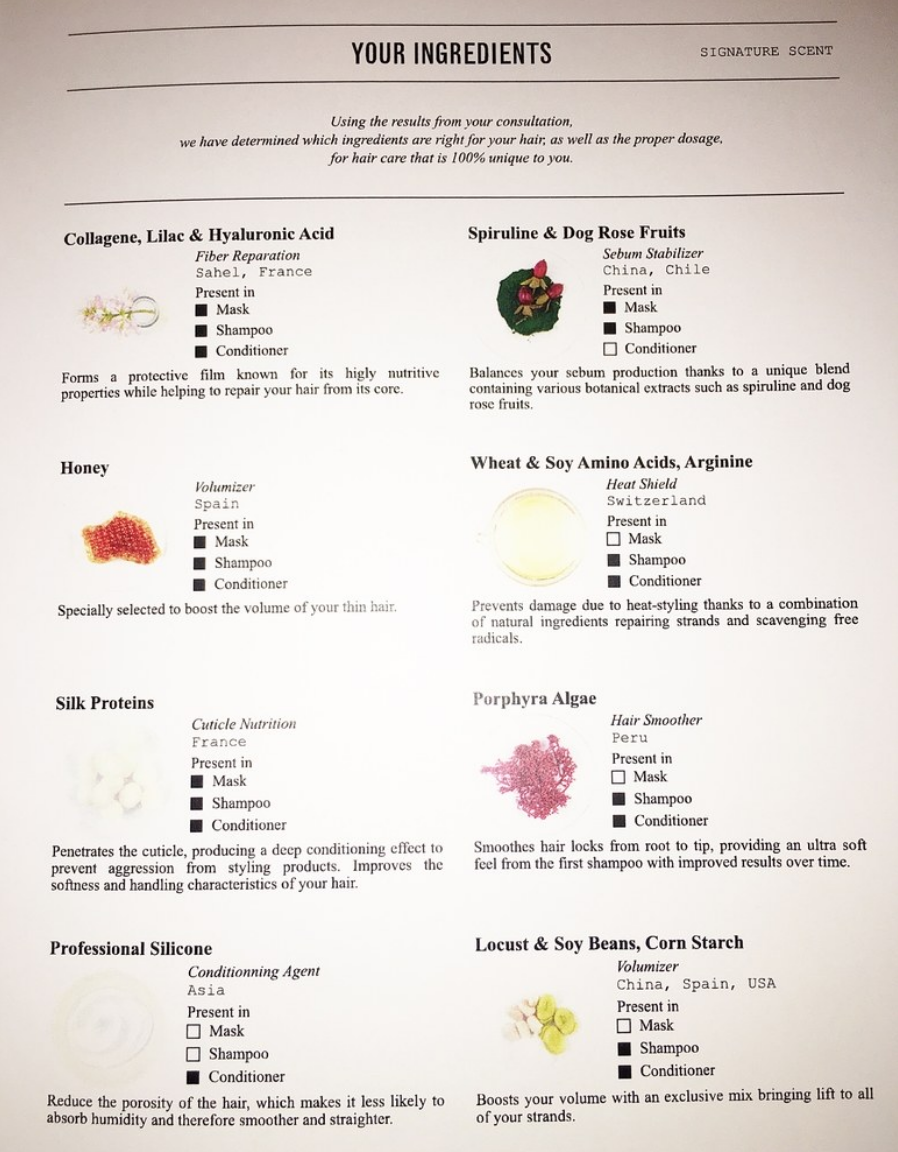
In an interview in Allure, the company’s CEO and co-founder, Arnaud Plas, stated:[*]
The line between mass and professional brands was starting to blur and consumers were looking for more value in their products in order to justify a more premium cost. Plus, the expectation for personalization is driving a lot of change. It’s gone from being a nice-to-have to a must-have, especially in hair care where everyone’s hair has unique needs.
A 2018 survey put the average cost of shampoo in the US between $1.88 and $6.03 per bottle:[*]
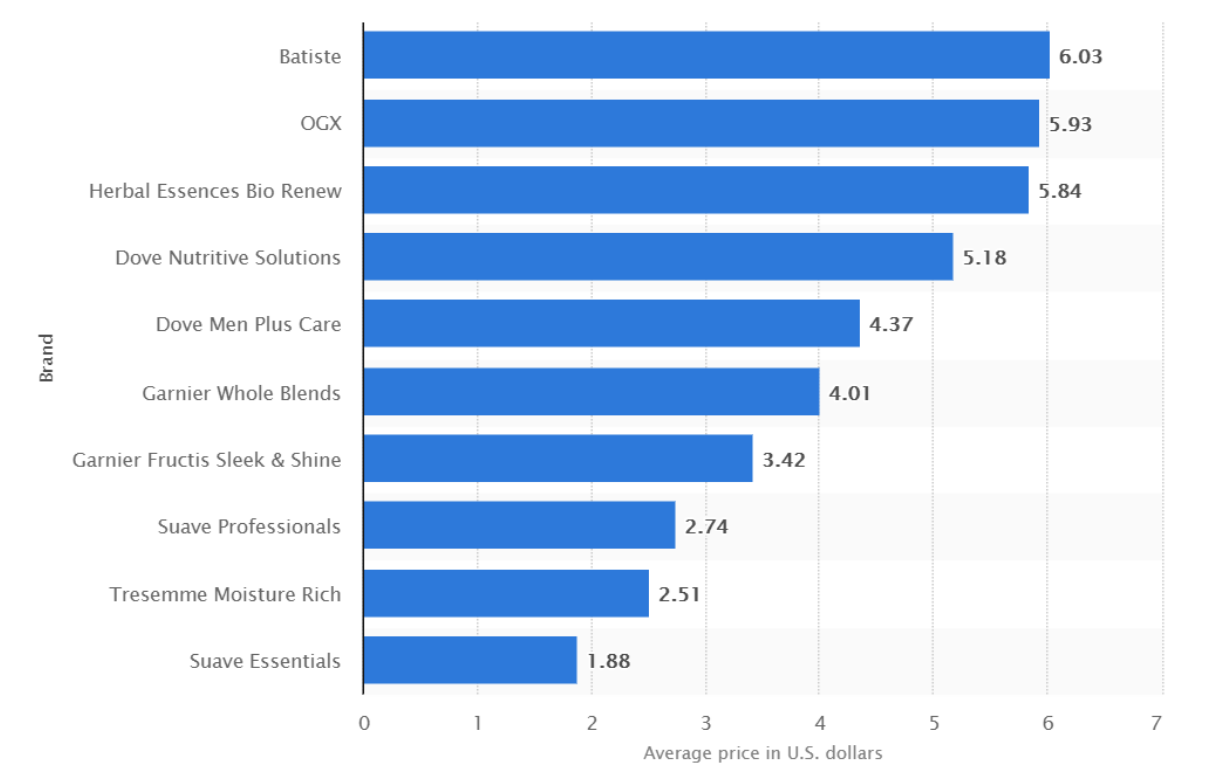
But as Plas indicated, Prose is aiming at the consumer who places a high value on their hair care and the customizable formula. The above-average cost of Prose is justified because it’s delivering something their customers value: personalized formulas and personalized results.
Prose’s focus on value has helped them raise over $25 million in venture capital, netted them dozens of online write-ups, and earned their founders a spot on Forbes’ 30 Under 30 in Retail & Ecommerce.[*]
If you're convinced value-based is the way to go, here are the four steps you should take to get it going for your products:
-
Figure out who your customers are. Start to develop personas around them. Try to understand what they care about, shop for, and want out of your product.
-
Send surveys and ask them specific questions.[*]
A MaxDiff analysis can help you find out what customers value most and least — for example, do they care more about peanut butter or jelly? Does taste or shelf life matter more?
An ideal survey might look like this:
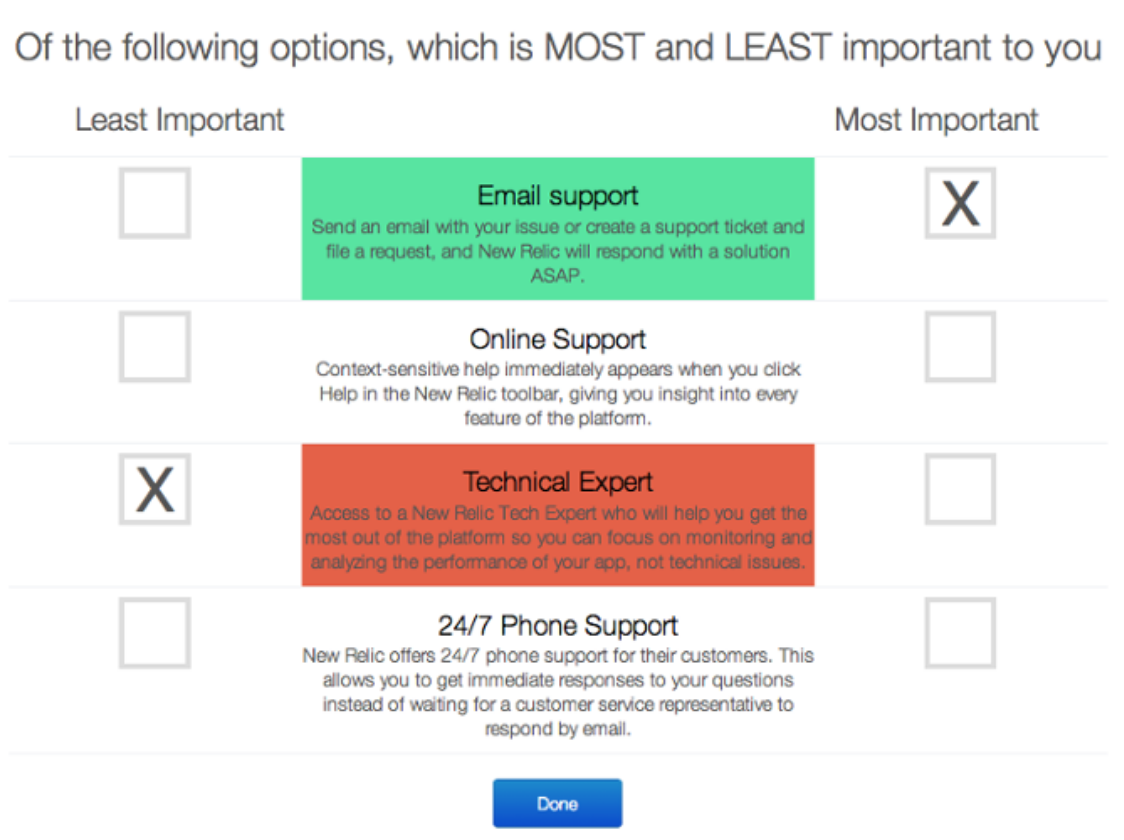
-
Once you know what they value most, ask about price. A price sensitivity analysis can help you ask specific questions about what they'd pay for that value. Is a great-tasting organic jam priced at $3 suspicious? Is $10 too high? Is $5 just about right?
-
Finally, analyze all the results. You're looking for a pricing “sweet spot” where the largest portion of your customers feel comfortable with the value you're giving them and you can make the highest amount of the profit.
Conclusion
The most important thing you should remember about pricing for ecommerce is that it's a process.
If you “set and forget” your product prices, you're on the road to failure.
You need to have a plan to constantly review your underperforming products, check on your competitors, and learn what real customers think about the value they get from you.
If you want help working out pricing for your business, use our product pricing calculator below.










Add A Comment
VIEW THE COMMENTS